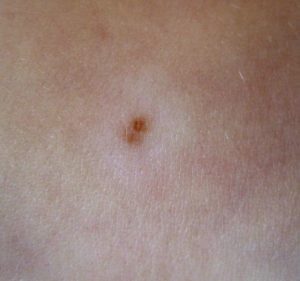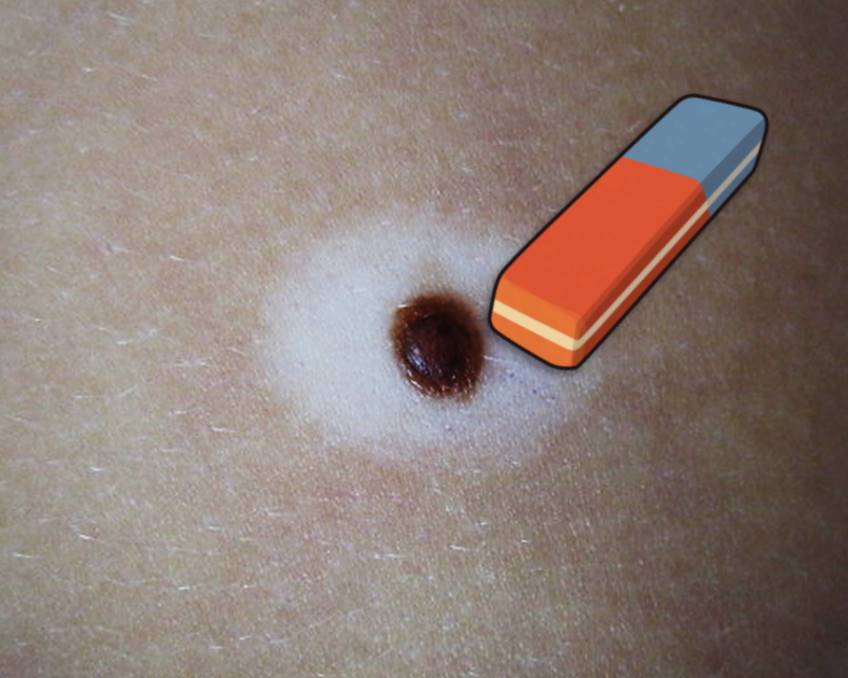Moles are usually brown, a uniform color. But has it ever happened to you that the skin around one of them turns white, even making the mole disappear?

In this post I will talk about this phenomenon called halo nevus or Sutton’s nevus…..
What is a HALO NEVUS OR SUTTON NEVUS?

These are moles that have an area that is lighter than the surrounding normal skin. This area is usually symmetrical and can appear either in lifelong moles (congenital nevi) or in moles that have appeared throughout our lives.
It is more common in children and adolescents, most often on the back. It is also more common in people with a high number of moles. It is also more common in people who have vitiligo or whose parents have vitiligo.
Halo nevi usually appear on the back of children and adolescents.
Usually the mole will start out brown, its original color, but it may turn pink until it disappears completely, leaving a circle in the area that is lighter than normal skin, which will eventually return to its normal color. More rarely, but occasionally, some moles can “resist,” with the white area around them disappearing over time.
More photos of halo nevus or Sutton nevus
Why does this phenomenon occur?

It is believed that the gradual lightening of the mole or its disappearance is the result of a kind of attack by our defenses (immune system) on the cells that make up the mole, called melanocytes. The reason why this occurs in some people and not in others is not clear.
SHOULD WE BE CONCERNED about a halo nevus or Sutton’s nevus?
Halo nevi are not a cause for concern, especially when they appear in children or adolescents. However, it is advisable to consult an online dermatologist or a face-to-face dermatologist if they appear, especially in adults who have not had similar moles before. In these cases, it is important to see a dermatologist to rule out melanoma, which is rare.
If one or more halo nevi appear in an adult who has never had similar moles before, it is advisable to consult a dermatologist.
Is it TREATABLE?
There is currently no treatment for halo nevi. It is normal to let them grow and run their course until they disappear, as they pose no health risk.
